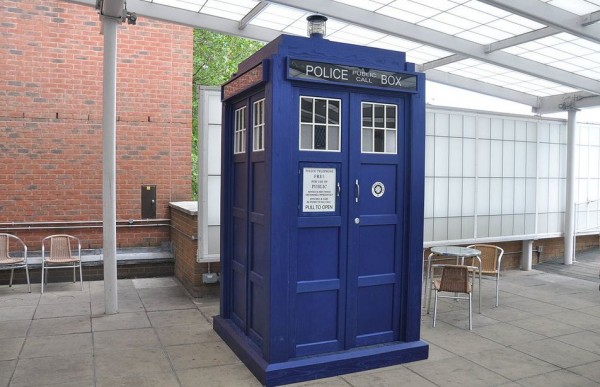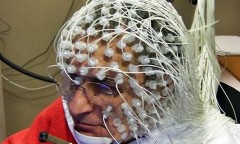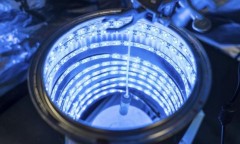By Arthur Dominic J. Villasanta , | April 27, 2017

The TARDIS time machine from Doctor Who.
A mathematical model for a viable machine that can travel backwards and forwards through time has been developed by an instructor at the University of British Columbia (UBC).
And because of this, we should start calling machines that travel through time "Spacetime Machines" and not "Time Machines" as we are wont to. The former is more accurate.
Like Us on Facebook
Ben Tippett, a mathematics and physics instructor at UBC's Okanagan campus, recently published a study about the feasibility of time travel. Tippett's field of expertise is Einstein's Theory of General Relativity.
Tippett studies black holes and science fiction when he's not teaching. Using math and physics, developed a formula that describes a method for time travel. And he's contradicted general relativity in the process.
Einstein's division of space into three dimensions, with time in a separate dimension by itself, is incorrect, argues Tippett.
The four dimensions should be imagined simultaneously, where different directions are connected, as a spacetime continuum. Using Einstein's theory, Tippett contends the curvature of space-time accounts for the curved orbits of the planets.
In "flat" -- or uncurved -- spacetime, planets and stars move in straight lines. In the vicinity of a massive star, spacetime geometry becomes curved, and the straight trajectories of nearby planets will follow the curvature and bend around star.
"The time direction of the spacetime surface also shows curvature. There is evidence showing the closer to a black hole we get, time moves slower," said Tippett.
"My model of a time machine uses the curved spacetime to bend time into a circle for the passengers, not in a straight line. That circle takes us back in time."
While it is possible to describe this type of time travel using a mathematical equation, Tippett doubts that anyone will ever build a machine to make it work.
"HG Wells popularized the term 'Time Machine' and he left people with the thought that an explorer would need a 'machine or special box' to actually accomplish time travel," said Tippett.
"While it is mathematically feasible, it is not yet possible to build a spacetime machine because we need materials -- which we call exotic matter--to bend spacetime in these impossible ways, but they have yet to be discovered."
For his research, Tippett created a mathematical model of a Traversable Acausal Retrograde Domain in Spacetime (TARDIS). No relation to Doctor Who's famous time machine, however.
He describes TARDIS as a bubble of spacetime geometry which carries its contents backward and forwards through space and time as it tours a large circular path. The bubble moves through space-time at speeds greater than the speed of light at times, allowing it to move backward in time.
"Studying spacetime is both fascinating and problematic. And it's also a fun way to use math and physics," according to Tippett.
"Experts in my field have been exploring the possibility of mathematical time machines since 1949. And my research presents a new method for doing it."
Tippett's research was recently published in the IOPscience Journal "Classical and Quantum Gravity".
-
Use of Coronavirus Pandemic Drones Raises Privacy Concerns: Drones Spread Fear, Local Officials Say

-
Coronavirus Hampers The Delivery Of Lockheed Martin F-35 Stealth Fighters For 2020

-
Instagram Speeds Up Plans to Add Account Memorialization Feature Due to COVID-19 Deaths

-
NASA: Perseverance Plans to Bring 'Mars Rock' to Earth in 2031

-
600 Dead And 3,000 In The Hospital as Iranians Believed Drinking High-Concentrations of Alcohol Can Cure The Coronavirus

-
600 Dead And 3,000 In The Hospital as Iranians Believed Drinking High-Concentrations of Alcohol Can Cure The Coronavirus

-
COVID-19: Doctors, Nurses Use Virtual Reality to Learn New Skills in Treating Coronavirus Patients










